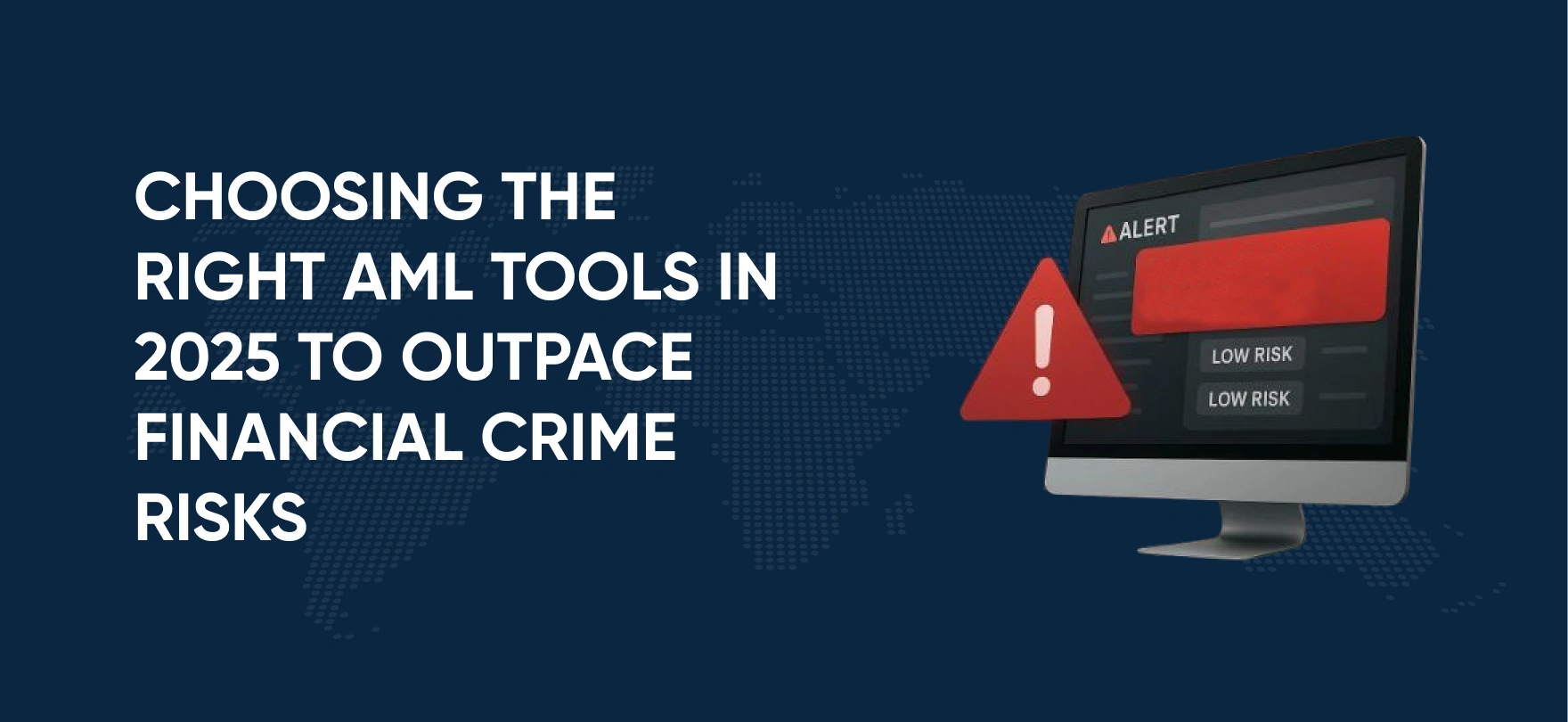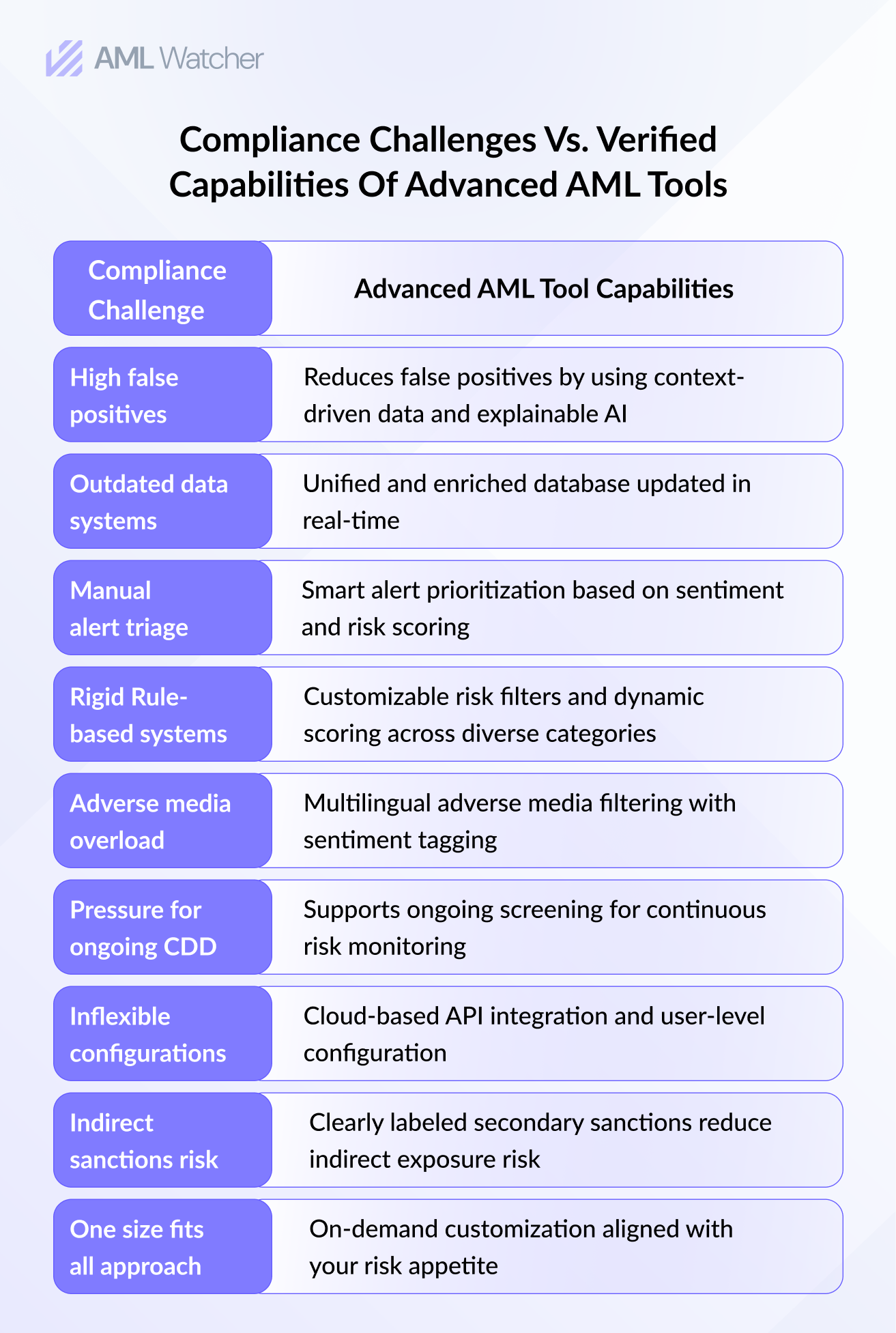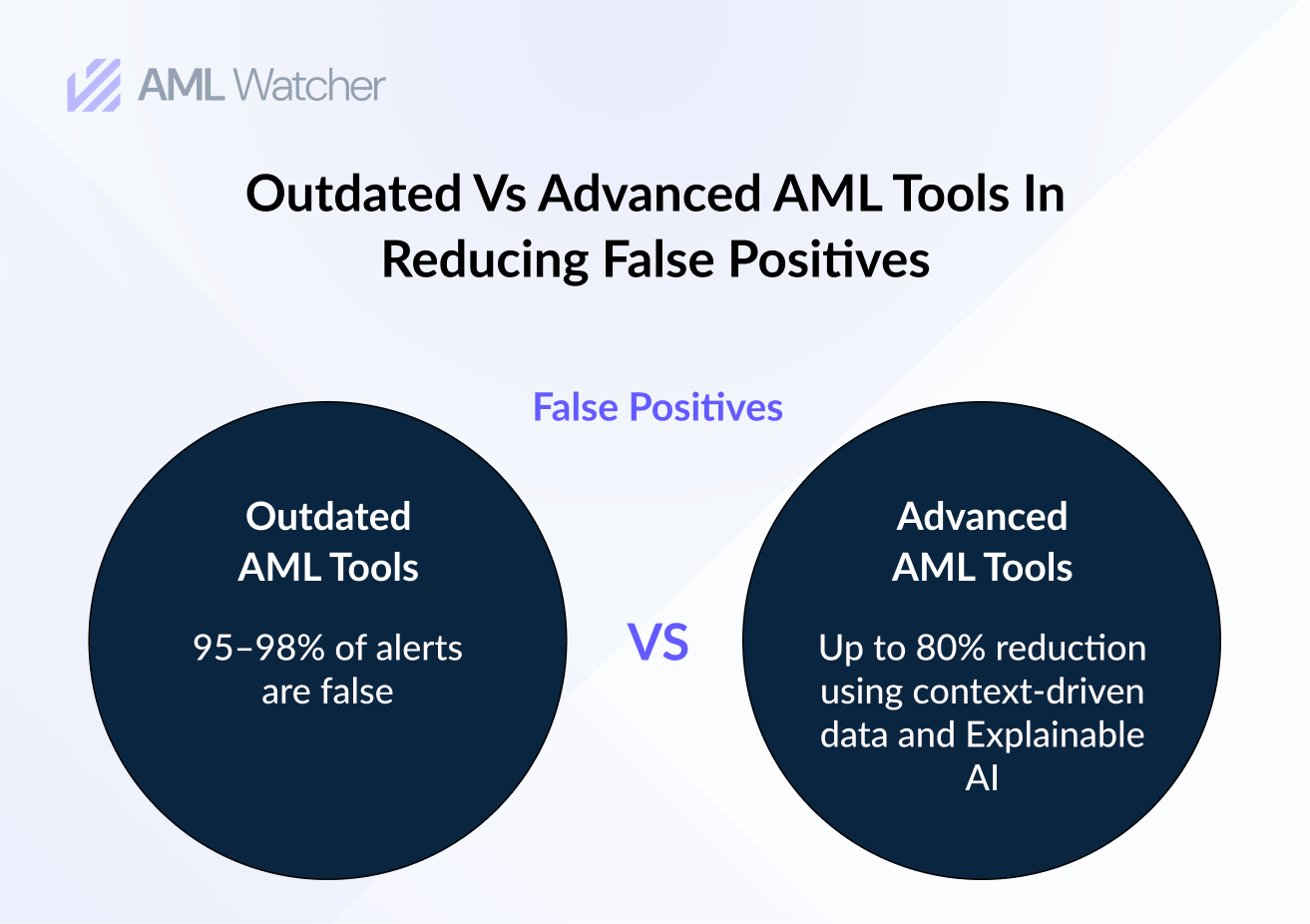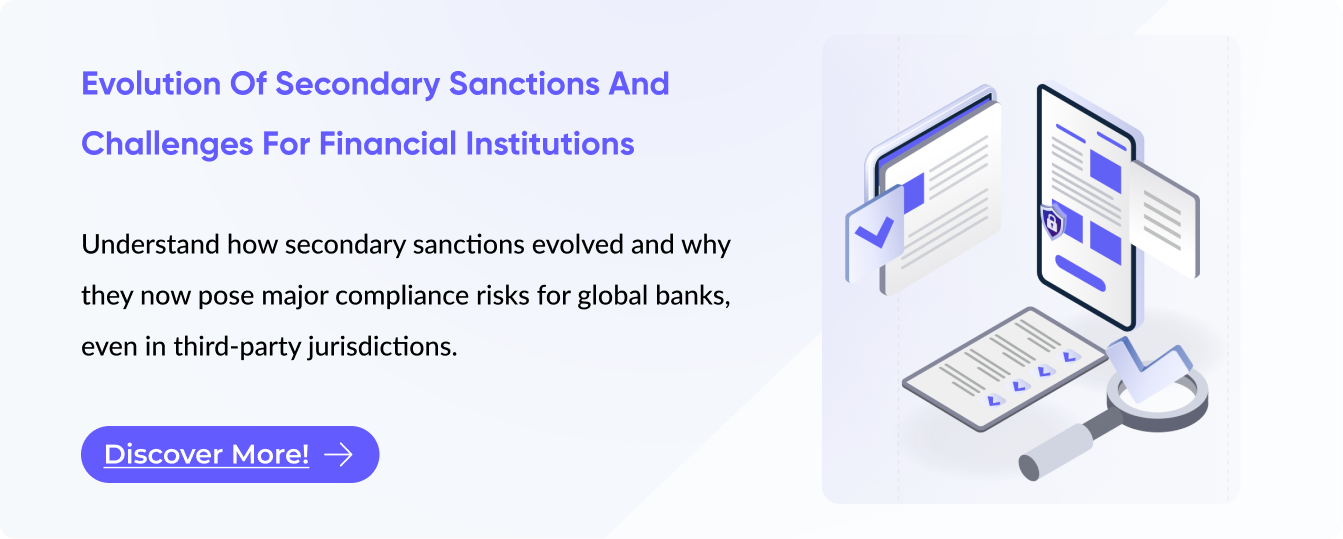
How to Choose the Right AML Tool for Cost-Effective Compliance
If your AML tool fails to detect your next high-risk customer, would you even know before it’s too late?
For far too many financial institutions, the answer is a silent, devastating “No”.
A 2024 report by Finbold reveals a harsh truth about the state of AML Compliance in financial institutions. The findings show that United States (US) banks paid approximately $4.5 billion in AML fines across 57 separate cases, each exceeding $500,000. It shows that financial institutions may need to overhaul their AML compliance programs, highlighting how conventional compliance systems and generic and rigid, AML screening tools are no match for the speed, scale, and advanced tactics of financial criminals.
As money laundering threats and typologies evolve, regulators across the globe are tightening the scrutiny, raising the risk of penalties for non-compliance. This makes it necessary to select the right AML compliance solution. However, it becomes a challenge for them.
Selecting the right AML tools is a big challenge for chief compliance officers, risk managers, and financial leaders. The appropriate AML Compliance tool is essential not just for being efficient, but also for ensuring the organization’s long-term survival and business expansion.
So, how can financial institutions effectively protect themselves and succeed in this challenging environment? It all begins with understanding the right AML Tools designed to protect financial institutions from complex global AML landscape.
What is an AML Tool?
An AML (Anti-Money Laundering) tool is a specialized software solution that supports core compliance functions such as transaction monitoring, sanctions screening, fraud detection, customer risk assessment and case management. Among these, customer risk profiling is the cornerstone of effective compliance. These tools are designed to support financial institutions in discharging their obligations towards AML and sanctions compliance and avoid regulatory penalties.
AML Compliance Challenge Today
The risk landscape for financial service providers is highly fragmented. Fintechs operating in multiple jurisdictions are particularly faced with the unique challenge of complying with complex and divergent regulatory requirements. In order to avoid this compliance uncertainty, these financial service providers choose de-risking and de-banking as a safer option to avoid regulatory penalties, not only losing potential revenue but also causing damage to wider efforts for financial inclusion, all because of a lack of accurate, context-enriched data.
The core operational burden for compliance teams lies in isolating illicit activity within massive transaction datasets; this is where false positives flood the real risks in transaction monitoring and customer risk assessment. This inefficiency directly fuels alert fatigue, operational costs, and failure to detect true risks
According to FATF Recommendation 1, financial institutions and DNFBPs must identify, assess, or address money laundering and terrorist financing risks in line with the Risk-Based Approach (RBA). This helps them allocate resources where the risks are greatest.
Some of these challenges in complying with AML regulations in line with a risk-based approach, include:
- Lower Quality Data and System Fragmentation
- Burden of Accountability and Personal Liability
- High False Positive Rates
- Resource Constraints
- Lack of customized options in tools
- Rising Regulatory Expectations
- Rapid Evolution of Financial Crimes
Failure to assess customer risk and high-risk transactions has cost many big banks billions of dollars in fines recently.
Why Traditional AML Tools used by Banks are failing?
Traditional anti-money laundering (AML) systems were designed for fixed risks and with a one-size-fits-all approach. Today, they are struggling to keep up:
- High False Positives: Research shows that about 95% to 98% of alerts are false positives. This overwhelms teams and takes their focus away from real risks.
- Inflexible Systems: These tools cannot easily adapt to new threats like trade-based laundering or real-time social engineering scams. Additionally, these tools don’t always offer accurate customer risk assessment according to conflicting AML regulations across jurisdictions and contradicting sanctions regimes.
- Lack of Behavioral Insights: Traditional systems do not check for the underlying behaviors or network relationships of entities, they just directly flag transactions based on their quantity or frequency.
- Lack of Customization to Risk Appetite: Each business has a unique risk appetite depending upon their scale, industry, operations, and regulatory obligations. Off-the-Shelf solutions mostly fail to offer customization in line with the risk appetite of diverse businesses, according to their size and jurisdiction of operation. This exposes the businesses to multiple risks due to staying stuck with vendors that don’t incorporate new changes.
What Exactly is an Advanced AML Compliance Tool?
An advanced anti-money laundering tool must not only flag suspicious transactions; it must offer diverse features such as ongoing risk assessments, predictive trend analysis, and contextual pattern recognition across diverse data streams. This state-of-the-art approach assists FIs in spotting customers and transactions potentially linked to terrorist financing and money laundering.
The FATF’s 2021 Report titled “Opportunities and Challenges of New Technologies for AML/CFT” highlights how technologies like AI, machine learning, graph analytics, natural language processing, and API-based systems can improve the ability to detect financial crimes. These tools help increase efficiency while also reducing the number of false positives in financial intelligence workflows.
Capabilities of AML Screening Solutions that Matter in 2025
Differentiating themselves from legacy systems, today’s advanced AML tools run on real-time and flexible data systems. This empowers institutions with enhanced capabilities such as:
- Context Driven Risk-Assessment: Due to a fragmented compliance landscape, one person flagged as high-risk in by a financial institution in one country might be seen as high-net-worth and trusted by the financial institution in another jurisdiction. Therefore, it is necessary to know the complete context because it matters for an accurate risk assessment.
- Prioritizing Alerts More Smartly: A study on “Anti-money laundering Alert Optimization Using Machine Learning” indicates that AML tools infused with behavioral profiling and machine learning can reduce false positives by up to 80%. This reduction enables the compliance teams to focus on high-impact cases, reducing backlog and fatigue.
- Understanding Network Behavior and Risk Scoring: Advanced anti-money laundering (AML) tools go beyond just checking individual transactions. They examine how relationships between entities change over time. This method helps find hidden patterns linked to terrorist financing, trade-based money laundering, and fraud. In fact, these insights into relationships have shown double-digit improvements in detection accuracy.
- Learning and Adapting from Real-Time Information: Research shows that self-learning systems trained on both enriched real-time and historical data increase detection accuracy by up to 12% points by continuously refining risk profiles. These adaptive models allow tools to quickly respond to issues such as mule accounts and cross-border structuring.
- Offering Scalable Performance: Even with millions of transactions, advanced anti-money laundering tools still achieve scalable performance, supporting their customers with batch screening to handle large data volumes effectively. Additionally, with explainable Agentic AI, predicting potential issues during testing has become a very convenient task. This helps companies make quicker decisions, reduces the need for manual checks, and ensures compliance with regulations.
- Offering On-Demand Customization: Every financial institution has unique risk requirements for which they demand customized AML tools that let their teams easily adapt to emerging regulations, workflows, and risk levels. This assists FIs in staying compliant without relying on outside support.
What to Look For in an AML Solution
Very often, financial service providers consider compliance as a hindrance as it conflicts with their goal of business expansion. Therefore, they need an AML Screening tool that ensures efficient compliance without driving up operational costs or risking the loss of high-net-worth clients due to false positives. These are the things that every business needs to look for in an AML solution:
- Real-time updates and alerts that adjust based on risk priority.
- Context-driven sanctions screening to find hidden criminal relationships and networks.
- Risk category sorting with customizable filters for precise screening.
- Screening in multiple languages and jurisdictions for cross-border screening.
- Flagging of secondary sanctions with clear labeling to reduce indirect exposure risks.
- Easy setup through APIs and cloud-based systems for real-time deployment.
These features help institutions to address threats proactively, not just react to them.
Reduce Compliance Costs Upto 50% with AML Watcher
Financial institutions that are looking to change compliance from a mere requirement into a competitive edge require real-time, reliable, and intelligent tools.
AML Watcher offers exactly that; it empowers organizations not just to meet legal requirements but also to expand their operations with smart and flexible compliance tools.
Characteristics of AML Watcher’s data that empower businesses to comply seamlessly:
- An updated proprietary database of high-risk customers that refreshes every 15 minutes.
- Coverage of 215+ global sanctions regimes, including clearly labeled secondary sanctions.
- Over 2.6 million profiles of politically exposed persons (PEPs) from more than 235 countries and regions, organized by seniority and risk level.
- 415+ customizable risk categories for adverse media in more than 80 languages.
- Tools for sentiment analysis and scoring to speed up case prioritization.
- Ongoing screening that identifies hidden risks the moment they arise.
This set of features helps cut down on false positives, speeds up decision-making, and gives early warnings about hidden risks.
Frequently Asked Questions
Any organization that must adhere to the anti-money laundering (AML) laws, including banks, fintech companies, cryptocurrency platforms, and professional services firms, needs AML tools.
AML tools automate customer checks, identify suspicious behavior in real time, and produce reports for regulatory audits.
We are here to consult you
Switch to AML Watcher today and reduce your current AML cost by 50% - no questions asked.
- Find right product and pricing for your business
- Get your current solution provider audit & minimise your changeover risk
- Gain expert insights with quick response time to your queries






